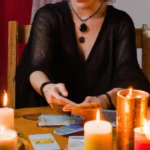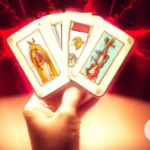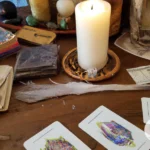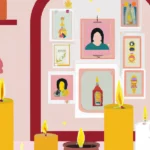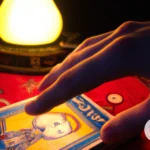Throughout history, Tarot cards have been believed to hold the power to predict a person’s future, including their eventual demise. The mere mention of Tarot cards often evokes images of ominous death predictions, causing many people to feel uneasy about using them as a tool for divination. However, the question remains: Is there any truth to the belief that Tarot cards can predict death? In this article, we will delve deeper into the origins and workings of Tarot cards, examine the myth of Tarot predicting death, provide real-life examples of how Tarot has been used in times of grief, and ultimately separate fact from fiction. Join us on a journey to discover the true power of Tarot.
What are Tarot Cards?
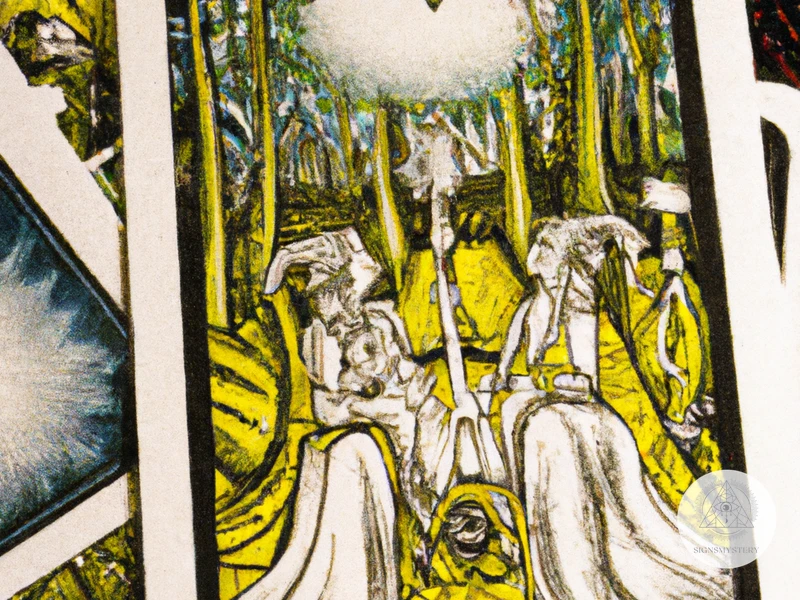
When it comes to divination and psychic readings, one of the most popular tools used is the Tarot. Tarot cards have been around for centuries and have been a source of fascination and intrigue for many individuals. But what exactly are Tarot cards? How do they work? Are they really able to predict the future or is it all just a myth? Let’s explore the origins and mechanics of Tarot cards and separate fact from fiction. To learn more about the negative connotations associated with Tarot cards, read our article on Negative Tarot Connotations.
Origins of Tarot Cards
The Tarot Cards have a rich history and the origins of the cards are a topic of much debate among scholars. One theory is that Tarot Cards originated in ancient Egypt, but there is little evidence to support this idea. Another theory suggests that the Tarot Cards were brought to Europe by the Romani people, also known as Gypsies. However, this theory is also unverified.
The most widely accepted theory is that Tarot Cards were created in northern Italy during the 15th century for the purposes of playing a trick-taking game called Tarocchi. The Tarot Cards were similar to playing cards, but the deck consisted of 78 cards with various images.
Over time, the use of Tarot Cards evolved beyond the game of Tarocchi and began to be used for divination and fortune-telling. In the late 18th century, French occultists began to assign esoteric meanings to the cards and developed the system of Tarot interpretation that is still used today.
It is important to note that while Tarot Cards are often associated with mysticism and the supernatural, they can also be used for the purpose of self-reflection and personal growth. Tarot readings can provide insight into one’s own thoughts and emotions, helping individuals to better understand themselves and their life experiences.
If you’re interested in learning more about Tarot, there are many resources available online, including articles and services dedicated to helping individuals use Tarot as a tool for personal growth and development.
How Tarot Cards Work
Tarot cards have been used for centuries, and many people believe that they can provide insight into various aspects of life, including love, career, and spirituality. In order to understand how tarot cards work, it’s important to first understand their structure.
A typical tarot deck contains 78 cards, which are divided into the Major Arcana and the Minor Arcana. The Major Arcana consists of 22 cards that represent major life events, such as The Fool, The Magician, and The Lovers. The Minor Arcana consists of 56 cards that are divided into four suits: Swords, Cups, Wands, and Pentacles. Each suit represents a different aspect of life, such as intellect, emotions, creativity, and material possessions.
When a tarot reader conducts a reading, they shuffle the deck of cards and then lay them out in a specific pattern known as a spread. The spread can vary depending on the reader and the question being asked, but it typically consists of a certain number of cards that are placed in specific positions.
Each card in a tarot deck has a specific meaning, and the interpretation of the cards is based on the reader’s intuition and the context of the reading. The image on each card can symbolize a variety of things, which can be interpreted differently depending on the situation. For example, the Death card is often associated with the end of a cycle or a major change, rather than a literal death.
Throughout the reading, the tarot reader will use their intuition and knowledge of the cards to provide insight into the question being asked. The goal is to help the person being read understand their current situation and gain clarity about their path forward.
It’s important to note that tarot cards are not a form of fortune-telling, nor do they have the power to predict the future. Rather, they provide guidance and insight into the current state of affairs, and offer suggestions for how to navigate what lies ahead with clarity and confidence.
While there is no way to verify the accuracy of tarot readings, many people find them to be a valuable tool for gaining insight and clarity in various aspects of life. It’s important to approach tarot readings with an open mind and a sense of personal agency, as they can provide insight and guidance, but ultimately, each person has the power to shape their own destiny.
Tarot Cards and Death
Tarot Cards have long been associated with foretelling one’s death or predicting unfortunate circumstances leading to death. However, this is largely a myth and is not how Tarot Cards function. The cards are not inherently evil or dangerous, as is often thought, but they are simply a tool used for divination.
The use of Tarot Cards and Death in popular media often portrays the cards as instruments that can accurately predict death. This portrayal has led to a widespread belief in the myth and has caused unnecessary fear and anxiety. It is important to understand that Tarot Cards are a means of self-reflection and exploration rather than an instrument of doom.
In Tarot readings, death is one of the cards, but its meaning is not literal. It represents change, transformation, and the end of a cycle, rather than an actual physical death. Every card in the Tarot has both positive and negative interpretations, and how they are interpreted depends entirely on the context of the reading.
It’s crucial to note that the existence of the Death Card in a Tarot reading does not necessarily indicate physical death or even a negative outcome. Instead, it often signals an end to something, such as the end of a relationship or the end of a negative pattern of behavior. This ending ultimately leads to new beginnings and positive change.
Rather than focusing on the potential for negative outcomes, Tarot Cards should be viewed as a way to gain insight into oneself and one’s circumstances. It’s essential to approach Tarot readings with an open mind and a positive outlook, as this will help facilitate genuine and useful insights. If you approach the cards with fear and anxiety, the results will be skewed towards negative issues.
The myth of Tarot Cards predicting death is fallacious, and it’s time to debunk it. Tarot is a helpful tool for self-discovery that allows one to gain insights and make better-informed decisions. By understanding the real nature of Tarot readings, individuals can reap the many benefits of Tarot without needless anxiety and apprehension.
The Myth of Tarot Predicting Death
Despite its prevalence in pop culture, tarot cards have long faced misconceptions about their significance and meaning. Perhaps most famously, tarot cards have been linked to the prediction of death, with ominous images of the skeletons and scythes frequently featured in movies and TV shows. However, this myth is just that – a myth. The reality is that tarot cards are tools used for divination and self-reflection, not harbingers of doom. In fact, many tarot readers argue that the cards can be a powerful tool for healing and growth. To better understand the truth behind the myth of tarot and death, it is important to explore the history and mechanics of tarot readings. Are tarot cards really capable of predicting death, or is this just another example of misguided superstition?
Interpreting the Cards
When interpreting tarot cards, it is important to remember that each card carries its own unique meaning and symbolism. Even the same card can have different interpretations depending on the context of the reading and the other cards surrounding it.
One common misconception is that tarot cards are exclusively used for predicting negative events, such as death. However, this is not true. Tarot cards are a tool for guidance and insight into various aspects of life, including love, career, spirituality, and more. While some cards can be interpreted as negative, they do not necessarily predict literal death or tragedy.
It is also important to consider the layout of the cards in a reading. Each card’s position in relation to the others can alter its meaning. For example, a seemingly negative card in a position that represents future possibilities could indicate a challenge that can be overcome with effort.
Additionally, the reader’s intuition and understanding of the querent’s situation play a role in the interpretation of the cards. A skilled reader will not rely solely on the standard meanings of the cards, but will also take the querent’s emotional state and specific circumstances into consideration.
Interpreting tarot cards effectively requires a combination of knowledge, intuition, and context. Keep in mind that tarot cards are a tool for guidance and not necessarily a predictor of literal death or negative outcomes. For more information on how tarot readings can be helpful, check out our article on the truth about psychic tarot readings.
Death in the Tarot
When it comes to death in Tarot readings, it’s important to understand that the cards themselves do not predict physical death. Instead, as with all Tarot readings, the cards offer a reflection of the energy and situations surrounding the person seeking the reading.
The Death card is often the most feared and misunderstood card in the Tarot deck. It depicts a grim reaper-like figure riding on a white horse, but this card is not actually indicative of physical death. Rather, it symbolizes transformation and change, such as the end of one chapter in life and the beginning of another.
Additionally, several other cards can have a negative connotation, but they do not necessarily predict death. The Tower card, for example, represents upheaval and chaos. The Devil card suggests temptation and addiction, while the Five of Swords can indicate betrayal and conflict.
It’s important to remember that even these negative cards can offer opportunities for growth and change. In fact, Tarot readings often highlight areas of our lives that need attention so that we can make positive changes and avoid negative outcomes. This is why Tarot cards are not inherently evil or dangerous, as some people believe. As we also mentioned before in the article “Tarot Cards Evil: Debunked”, this is just a myth surrounding Tarot cards.
While the Death card and other negative cards may initially bring unease, it’s important not to jump to conclusions about their meanings. Instead, seeking out guidance from a trustworthy and experienced reader can help provide clarity and insight into the changes and transformations in our lives. And remember, there are many positive cards in the Tarot deck that indicate positive outcomes and growth.
When a Tarot Reading Indicates Death
In a tarot reading, the Death card does not always indicate a literal physical death . It can also represent major transitions, endings, and transformations in a person’s life. However, there are certain situations where a tarot reading may indicate the possibility of physical death.
Here are some possible scenarios where the Death card or other cards in a tarot reading may point to the potential for death:
- Illness or health issues: If the Death card appears alongside cards indicating illness or health problems, it may suggest that the person’s health is worsening and there could be a risk of death.
- Accidents: Cards that depict accidents, danger, or unexpected events may suggest that there is a risk of death due to an accident or unexpected event.
- Mental health: If a person is struggling with mental health issues, cards such as the Tower, the Devil, or the Five of Cups may indicate a risk of self-harm or suicide.
- Legal or criminal issues: Cards such as the Justice card or the Seven of Swords may suggest that a person is facing legal or criminal issues that could potentially lead to death, such as the death penalty or involvement in dangerous criminal activity.
It is important to remember that a tarot reading reflects the energies and possibilities in a person’s life, but it is not a foregone conclusion that death will occur. A tarot reading can offer insights and guidance on how to navigate difficult situations and potential challenges, but ultimately it is up to the individual to make choices that will affect the outcome of their life. If a tarot reading does suggest the possibility of death, it is important to seek support and guidance from loved ones, health professionals, or spiritual advisors to find ways to cope and move forward.
How Tarot Can Help in Grief
When someone experiences a loss or death in their life, it can be an overwhelming and confusing time. While tarot cards are not designed to predict death, they can offer guidance and insight that may be helpful in coping with grief.
One way that tarot can help in grief is by providing a space for reflection and introspection. The act of drawing and interpreting tarot cards can help individuals process their emotions and thoughts related to the loss. By taking the time to sit with their feelings and consider the messages of the cards, they can gain a deeper understanding of their own inner world.
Another way that tarot can aid in grief is by offering a sense of direction and hope. The cards may provide guidance on how to move forward, where to find support, or what steps to take next. It can be difficult to see a way forward after a loss, but tarot can offer a glimmer of light in the darkness.
It’s important to note that tarot is not a substitute for professional counseling or therapy. However, it can be a helpful tool for those who are seeking additional support or insights as they work through their grief. Tarot can be used alongside other self-care practices, such as journaling, meditation, or spending time in nature, to support healing during this difficult time.
Ultimately, the way
Subscribe to Our Newsletter
Sign up to receive the latest news and updates.
Real-Life Examples: Death and Tarot Cards
As a topic that often elicits intense emotions and fear, death has long been associated with various superstitions and myths. While tarot cards have been stigmatized as a means of predicting death, the truth is far less sensational than the fiction. In this section, we will look at real-life examples of how individuals have used tarot cards to navigate the difficult and delicate subject of death. Through a series of case studies, we will examine how tarot readings have helped people gain insight, clarity, and even a measure of peace during the grieving process.
Case Studies
Tarot cards have been used for centuries to interpret the events and situations in a person’s life. However, their ability to predict death has remained one of the most controversial topics. To clarify this misconception, let’s take a look at some real-life examples of individuals who have had readings that seemed to indicate that their lives were coming to an end.
Case 1: A man in his mid-50s visited a tarot card reader seeking clarity regarding his health. The cards did indicate a potential health issue, but what alarmed the man was the appearance of the Death card. The reader explained that the card did not necessarily indicate a physical death, but rather a symbolic one. The man later realized that this could be interpreted as a major change in his life – he was considering early retirement and was worried about how he would occupy his time without a job.
Case 2: A woman visited a tarot card reader for insights on her relationship status. She was in a five-year relationship, but there were some serious issues brewing between the couple. The reader laid out the cards and the Death card appeared. The woman was understandably alarmed and interpreted it as a sign that her relationship was doomed to fail. However, as the reader explained, the card symbolized the end of a cycle, not necessarily the end of the relationship. The woman later realized that, despite the rocky patch, her relationship was not beyond repair, and the couple worked through their issues.
Case 3: A young woman visited a tarot card reader hoping to connect with her deceased father. The cards revealed the Death card, which initially caused her to panic. However, the reader explained the card could indicate transformation and that her father’s spirit was helping her move on with her life. The reading gave her a sense of peace and closure that she had been struggling to find since her father’s passing.
These examples illustrate the importance of understanding the symbolism of the Tarot and not interpreting it too literally. The Death card is often misunderstood, but it does not necessarily mean physical death. Instead, it can represent transformation, the end of a cycle or a significant change. Tarot readings can provide individuals with the insight and guidance they need to navigate life’s ups and downs, including the difficult process of grieving for lost loved ones.
Conclusion
As we come to the end of our exploration into the relationship between Tarot cards and death, it’s important to acknowledge that this topic can be both fascinating and unsettling. While the idea of Tarot cards predicting death may be a popular myth, the truth behind the practice is much more nuanced. Throughout this article, we’ve seen how Tarot cards can serve as a powerful tool for self-reflection, healing, and gaining insight into life’s big questions. As we reflect on what we’ve learned, it’s clear that the key to unlocking the true potential of Tarot lies in taking a thoughtful and respectful approach to the cards, and using them as a means of personal growth and empowerment. With that in mind, let’s explore some final thoughts on the truth of Tarot and death, and how we can approach Tarot readings for both the joys and challenges of life.
The Truth of Tarot and Death
After delving into the history and facts surrounding Tarot Cards and their supposed ability to predict death, it’s important to clarify the truth about Tarot and death.
First and foremost, it is crucial to understand that Tarot Cards are not a definitive source of information or prediction. Tarot Cards predictions are not set in stone but are a guide to the energy surrounding the situation at the given moment in time. The ultimate outcome is not predetermined but depends on various factors, including the individual’s free will.
Second, Deaths and the tarot rarely go hand in hand, but it is important to acknowledge the possibility of drawing cards that indicate death or an ending in a reading. However, these cards are not to be taken as a prophecy but rather as invitations to reflection, opportunities for rebirth or change.
Third, interpreting Tarot Cards require a certain amount of knowledge, experience, and intuition. Professional Tarot readers are trained to dive deeper into the symbolism and ties of the card’s meanings. That is why people who are grieving should be careful who they seek for a tarot reading. A trusted professional who can provide guidance and insight can be a source of support when navigating through life’s most challenging moments.
The truth is that Tarot Cards do not predict death in the sense that it is an inevitable or predestined end. Rather, reading tarot cards can help individuals gain insight and perspective in difficult times, offering guidance and comfort as they navigate through significant shifts or life changes.
How to Approach Tarot Readings for Life and Death
When it comes to tarot readings, especially when it comes to questions about life and death, it’s important to approach the cards with caution and reverence. Here are some ways to approach tarot readings for life and death:
| Be Clear | Before you start a tarot reading about life and death, make sure you are clear about the intention of the reading. Are you seeking insight into your own mortality? Are you trying to connect with a deceased loved one? Be clear about what you want to know. |
| Choose a Trusted Reader | When seeking information about life and death through tarot, it’s important to choose a reader you trust. Look for someone who is compassionate, empathetic, and experienced. Ask for references or read reviews before choosing a tarot reader. |
| Release Fear and Judgment | It’s natural to feel fearful or judgmental about questions related to life and death. However, try to release these emotions before a tarot reading. Allow yourself to be open to whatever messages the cards reveal, without letting your fears or biases cloud your interpretation. |
| Remember it’s Not Set in Stone | A tarot reading about life and death can be insightful and helpful, but it’s important to remember that the future is not set in stone. The cards may reveal a potential outcome, but you always have the power to make choices that can change the outcome. Use the information revealed during a tarot reading as a tool for empowerment and growth. |
| Don’t Make Life Decisions Based Solely on a Reading | It’s important to remember that a tarot reading about life and death is just one source of information. Don’t make any major life decisions solely based on a reading. Take the information revealed in a reading and consider it in the context of your life as a whole before making any decisions. |
Approaching tarot readings for life and death with these guidelines in mind can help you gain insight and perspective, while also honoring the gravity and importance of the questions being asked. Remember, the tarot is a powerful tool for self-discovery and growth, but it should always be approached with respect and mindfulness.
Frequently Asked Questions
Is it true that Tarot cards can predict death?
There is a lot of confusion and misinformation about the role Tarot cards play in predicting death. While they can certainly offer insight into major life events, it is important to approach these readings with a clear understanding of how they work.
How do Tarot cards work?
Tarot cards are a tool for divination, a way of seeking guidance or insight into situations or questions by interpreting symbolic images. Each card in a Tarot deck has a unique interpretation, and the way the cards are laid out and read can offer helpful perspectives on past, present, and future events.
What is the origin of Tarot cards?
As with many forms of divination, the origins of Tarot cards are somewhat mysterious. Some historians believe they were first used for gaming in Europe during the early Renaissance, while others trace their roots back to ancient Egypt or the Kabbalah. The Tarot as we know it today was popularized in the late 19th and early 20th centuries during a resurgence of interest in the occult.
Can Tarot cards really help with grief?
Many people find comfort and solace in Tarot readings during times of grief. By offering a new perspective or framework for understanding loss and transition, Tarot can help individuals process and work through complicated emotions in a safe and supportive space.
What are some common misconceptions about Tarot readings?
Some people believe that Tarot readings can predict the future with perfect accuracy, or that the cards themselves hold some kind of mystical power. In reality, Tarot readings are a way to tap into your own intuition and connect with your own inner wisdom.
Is there a specific card that represents death in the Tarot?
Many Tarot readers consider the Death card to represent transformation or rebirth, rather than literal death. It is important not to take any one Tarot card at face value, but to understand how it fits into the overall context of the reading.
Can Tarot readings really predict major life events?
While Tarot cards can offer helpful insights into major life events, it is important to remember that the future is never set in stone. A Tarot reading can help you feel more prepared or empowered to face what lies ahead, but ultimately it is up to you to make decisions and create your own destiny.
What should I do if a Tarot reading indicates death?
If a Tarot reading suggests that death may be an important theme in your life, it is important to approach the situation with care and sensitivity. Talk to your Tarot reader about your concerns and consider seeking out additional support from a therapist or counselor if you are struggling to cope.
Why do some people fear Tarot readings?
Some people are skeptical of Tarot readings because they view them as a form of occult or mystical practice. Others may be afraid of what the cards will reveal about their past, present, or future. It is important to approach Tarot readings with an open mind and a willingness to explore all possibilities.
What are some other uses for Tarot cards?
While Tarot cards are most commonly associated with divination or fortune-telling, they can also be used for meditative or creative practices. Some people use Tarot cards as a way to reflect on different aspects of their personality or inner lives, while others use them as a source of inspiration for writing or artistic projects.




